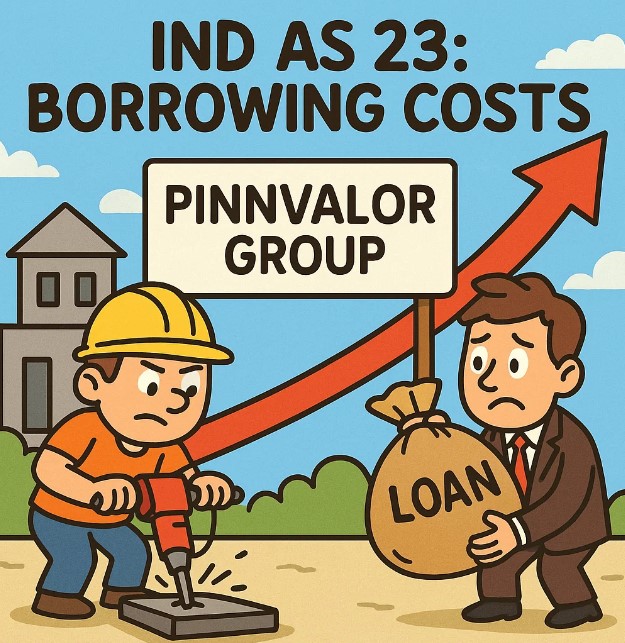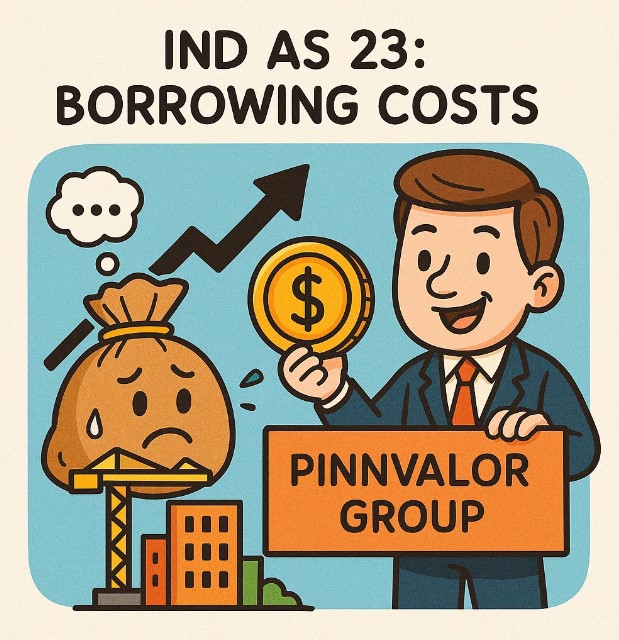
IFRS: Borrowing Costs
Borrowing costs refer to the costs an entity incurs in connection with borrowing funds, such as interest, financing charges, and other costs directly attributable to the borrowing of funds. Under IAS 23: Borrowing Costs, entities must capitalize certain borrowing costs directly attributable to the acquisition, construction, or production of a qualifying asset. This ensures that the financial statements present a true and fair view of an entity's financial performance and position.
Correctly accounting for borrowing costs goes beyond fulfilling regulatory requirements; it’s about maximizing the value of your assets. By capitalizing these costs, you ensure your business’s financial health is accurately represented, which strengthens your position for future growth and fosters confidence among investors.
Key Principles of IAS 23:
- Definition of Borrowing Costs: Borrowing costs include:
- Interest and other costs incurred in connection with borrowing of funds
- Amortization of ancillary costs incurred in connection with securing a loan
- Exchange differences arising from foreign currency borrowings
- Finance charges related to finance leases
- Qualifying Assets: A qualifying asset is one that necessarily takes a substantial period of time to get ready for its intended use or sale. Examples of qualifying assets include:
- Property, plant, and equipment
- Intangible assets
- Investment properties under construction
- Capitalization of Borrowing Costs: Borrowing costs should be capitalized when they are directly attributable to the acquisition, construction, or production of a qualifying asset. The capitalization begins when:
- Expenditures for the asset are being incurred
- Borrowing costs are being incurred
- Activities that are necessary to prepare the asset for its intended use or sale are underway
- Exclusion of Borrowing Costs: Borrowing costs should not be capitalized for assets that are ready for their intended use or sale. Additionally, borrowing costs related to routine maintenance or minor repairs should be expensed as incurred. Assets that do not take a substantial amount of time to be ready for use, such as inventories or assets with short construction periods, are excluded from capitalization.
- Effective Interest Rate Method: Under IFRS, the effective interest rate (EIR) method should be used to calculate the amount of borrowing costs to be capitalized. If a loan is specific to a project, the borrowing costs should be directly attributed to that project. For general borrowings, the entity should use a weighted average rate of interest to allocate the borrowing costs.
These costs should be recognized in the period in which they are incurred, unless they are directly attributable to the acquisition, construction, or production of a qualifying asset.
For these assets, borrowing costs directly attributable to their acquisition, construction, or production must be capitalized.
The capitalization of borrowing costs stops when substantially all activities necessary to prepare the asset for its intended use or sale are completed.

Example:
A company constructs a factory and borrows funds specifically for the construction. The interest costs incurred on the loan during the construction period are capitalized as part of the factory's cost. Once the construction is complete, the capitalized borrowing costs are depreciated along with the factory over its useful life.
Impact on Financial Statements:
- Income Statement: Borrowing costs that are expensed appear as finance costs in the income statement, affecting the entity’s net income.
- Balance Sheet: Capitalized borrowing costs are included in the carrying amount of the qualifying asset and are depreciated/amortized over its useful life.
Conclusion:
IAS 23 ensures that borrowing costs associated with the acquisition, construction, or production of qualifying assets are treated consistently and transparently. By capitalizing borrowing costs, entities are able to reflect the true cost of their qualifying assets, providing more accurate financial information to investors and stakeholders. Companies must assess each situation to determine whether borrowing costs should be capitalized or expensed, in line with IFRS requirements.
